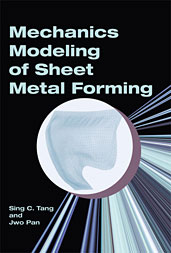Journal Article
Ultrasonic Spot Welding of AZ31B to Galvanized Mild Steel
2010-04-12
2010-01-0975
Ultrasonic spot welds were made between sheets of 0.8-mm-thick hot-dip-galvanized mild steel and 1.6-mm-thick AZ31B-H24. Lap-shear strengths of 3.0-4.2 kN were achieved with weld times of 0.3-1.2 s. Failure to achieve strong bonding of joints where the Zn coating was removed from the steel surface indicate that Zn is essential to the bonding mechanism. Microstructure characterization and microchemical analysis indicated temperatures at the AZ31-steel interfaces reached at least 344°C in less than 0.3 s. The elevated temperature conditions promoted annealing of the AZ31-H24 metal and chemical reactions between it and the Zn coating.

